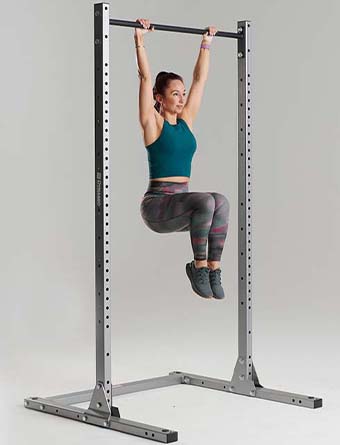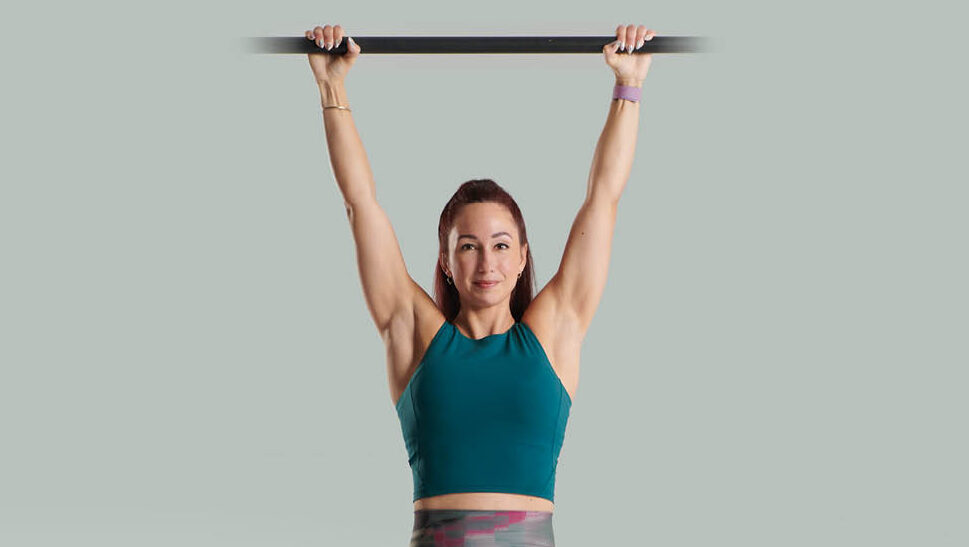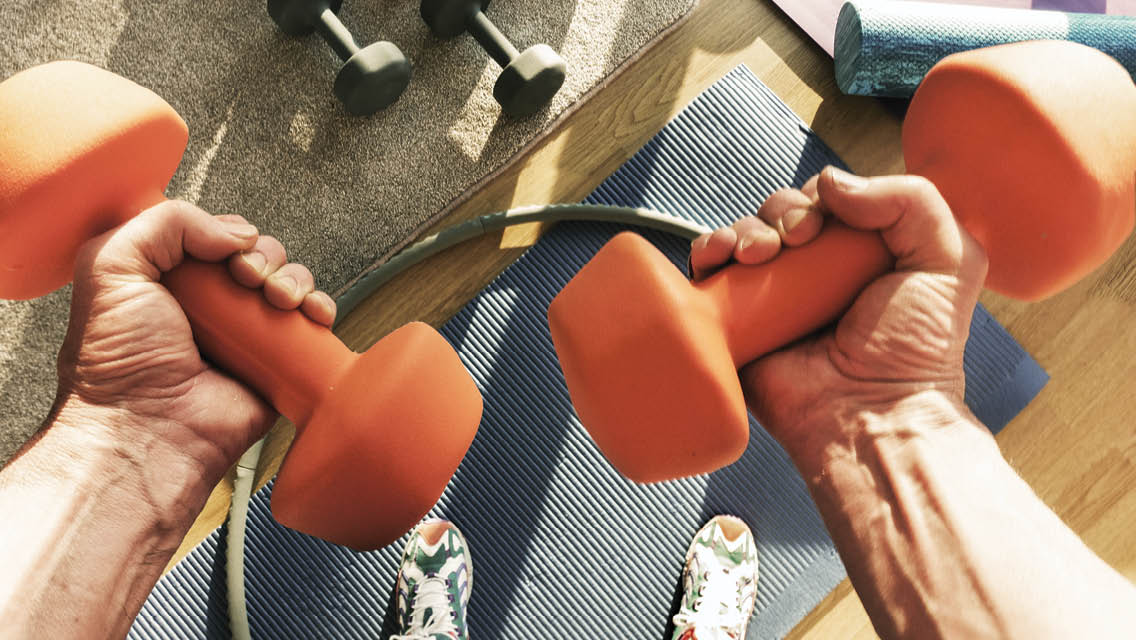Hanging from a bar is often a means to an end — the first stop in performing pull-ups, for instance, or traversing monkey bars. What many people underestimate are the benefits of just hanging, no hoisting or swinging required.
This straightforward hold improves grip strength, shoulder stability, core activation, and overall posture. It’s also a great way to stretch the upper body and decompress the spine.
Hanging from a bar (or a set of rings, or a suspension-training system) might sound intimidating, but rest assured: The move can be adapted for beginners and progressed over time. Moreover, it doesn’t take a major time investment to see results.
If you’re new to this, begin with your feet supported on the floor. Set up your bar at an arm’s-length distance overhead, or stand on a bench or a box that allows you to reach the bar. Hang with your feet planted, then gradually raise the bar (or lower your bench) until you are on your tippy-toes. Start by spending five to 10 seconds in a hanging position; once you can hold for 30 seconds straight, practice raising one leg at a time.
You’ll soon be able to hang with both feet off the floor. Again, practice in short increments.
As this becomes easier, you can play with single-arm hangs. Here again, start with your feet supported on the floor.
Follow these tips to get the most out of your hang time.
Instructions

- Grasp a pull-up bar with both hands and hang with arms extended. Use a box or a bench to reach the height of the bar, if needed.
- Actively engage your full body, including your core, legs, and upper back. Keep your shoulders away from your ears.
- Begin with three sets of 10-second holds. Focus on maintaining good form; don’t hang to failure during these efforts.
- Repeat daily, if possible. Over time, build up to three sets of 30 seconds, increasing in five-second increments.
Additional Tips
- Engage your core muscles and maintain a neutral spine.
- Don’t hang to failure — short hangs (10 to 30 seconds) add up.
- Mix up your hang by changing grips, twisting through your torso, swaying your hips, or doing knee raises.
3 Variations of the Dead Hang
1) Active-to-Passive Hang (Scapular Pull-Ups)
- Take an overhand pull-up grip on the bar and hang from it.
- Keeping your arms straight, pull your shoulders away from your ears and your shoulder blades toward your waist (think of performing the reverse of a shrugging movement).
- Slowly reverse the move, allowing your shoulders and upper back to relax.
- Repeat for a total of eight to 12 repetitions.
2) Hanging Knee Raise

- Hang from a pull-up bar with an overhand grip, your body in a straight line from hands to heels.
- Smoothly raise both knees upward until they reach chest level. Focus on tilting your hips upward slightly as you raise your knees to engage more of the muscles in your anterior core.
- Reverse the movement, trying not to swing or pick up momentum on the way down.
- Repeat for three sets of 10 reps.
3) Flexed-Arm Hang

- Hang from a pull-up bar with arms bent 90 degrees.
- Start with three sets of 10-second holds.
- Build up to three sets of 30 seconds, increasing your hold time in five-second increments.





This Post Has 0 Comments